#William Bourchier
Photo
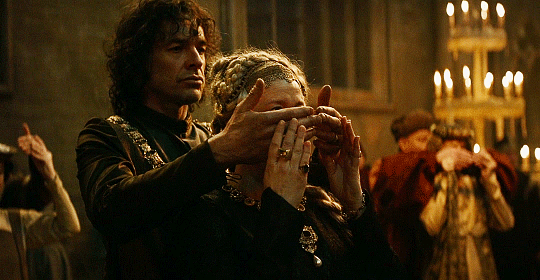


— It appears Your Majesty has her hands full.
— Always.
Margrete den Første (2021)
#Margrete den Første#Margrete den Første 2021#Margrete den Forste#Margrete: Queen of the North#Margrete Queen of the North#Danish cinema#period drama#Margrete I#Margrete Valdemarsdatter#Margaret I of Denmark#William Bourcier#William Bourchier#William Bourchier Count of Eu#Trine Dyrholm#Paul Blackthorne#perioddramaedit#gifshistorical#periodedits#my gifs
97 notes
·
View notes
Text
Isabel of Cambridge's second son, William, married Anne Woodville, sister to Elizabeth Woodville. Just another way the Woodville's became Yorks!
#elizabeth woodville#isabel of cambridge#war of the roses#woodville#anne woodville#william bourchier
1 note
·
View note
Quote
Lord Hussey, Mary's Chamberlain, and Paulet were sent to Beaulieu at some time during September [1533] with strict orders [...] that the Lady Mary was to cease calling herself Princess forthwith. Paulet's use in this connection was undoubtedly intended to indicate that this order came from the King personally, but Mary absolutely refused to accept it. As a result, on 30th September [1533] articles were drawn up to be delivered to her by the Earls of Oxford, Essex, and Sussex, condemning her usurpation of the title and threatening the King's displeasure. Paulet's message had been an informal warning—this was a formal one. It was equally ineffective.
The Life and Career of William Paulet (2008)
#william paulet#david loades#john de vere#henry bourchier#robert radcliffe#henrician#could only find a pretty thin boleyn connection to two/three of those earls
0 notes
Text
"The newly widowed Elizabeth (Woodville) was exceptionally vulnerable. Several of the trustees responsible for her jointure refused to hand over the manors that were meant to sustain her in her widowhood. Moreover, her brother-in-law, Edward Grey, had seized estates that her son Thomas should have inherited from his paternal grandfather, while her mother-in-law’s new young husband, Sir John Bourchier, had prevailed on Lady Ferrers to settle her principal properties on them jointly for life, ensuring that Thomas would have to wait far longer for this inheritance too. Rivers and Scales were pardoned in July 1461 and swiftly moved into the Yorkist establishment, which perhaps explains the success of the chancery suits Elizabeth launched to regain her jointure. Her son’s inheritance proved harder to recover. By 1463, Rivers was often in (Edward IV's) company and on his council, but Elizabeth needed someone with much stronger influence over the King. She turned to a distant kinsman, William, Lord Hastings, the King’s chamberlain. Hastings drove a very hard bargain for his aid but it was probably amid these negotiations that the King’s desire for Elizabeth was kindled."
-J.L. Laynesmith, "Elizabeth Woodville: the Knight's Widow", "Later Plantagenet and Wars of the Roses Consorts: Power, Influence, and Dynasty"
#historicwomendaily#elizabeth woodville#Elizabeth really had terrible in-laws#And these people weren't even the worst of them - that particular award goes to Richard of Gloucester#As complicated as her first widowhood sounds it was a breeze compared to the literal nightmare she went through during her second.#Honestly though: part me wonders what Elizabeth's first marriage was like because we know absolutely nothing about it.#The marriage itself is a blank slate but the fact that her husband's parents & siblings were so indifferent and uncooperative#to her - and their own kid-grandchildren?? - after he died indicates that his family may have been rather dysfunctional imo?#Certainly they (or most of them) don't seem to have cared about the wellbeing or dignity of his young and newly widowed wife which#doesn't exactly suggest closeness or support during the marriage itself from their end.#Elizabeth doesn't mention John Gray in her deathbed will either though she mentions Edward IV. She may have thought it was#'inappropriate' to mention her first husband beside her significantly higher-ranked second husband...but she DOES mention her son by#her first marriage - which would have drawn attention to it anyway - alongside her royal daughter so that's unlikely to have been a reason.#Maybe it was simply the passage of time? She and John had been married for very few years and she lived such a different life after that#So it's possible that her first marriage simply seemed very distant and faraway to her.#Alternatively it may have simply been undivided affection for Edward IV (her husband of 19 years who she married for love)#which fits well into the relatively personal nature of her will.#Of course we don't actually know anything about any of this and this is all pure wild speculation on my end...but I'm curious.#It's really a shame how little we actually know about Elizabeth's life - made worse by the very limited primary records of Edward IV's#reign and the fact that his chamber records don't survive. And it's even more frustrating that this is so rarely actually acknowledged#by historians. I'd argue we know far more about the life & interests of most other 'prominent' women of the Wars of the Roses#(sans the Neville sisters) than we do about Elizabeth Woodville.
38 notes
·
View notes
Text

Anne Parr was born around 1514 to Sir Thomas Parr and his wife, Maud Green. She was the youngest child of Thomas and Maud.
Sir Thomas died of the sweating sickness in 1517, leaving Maud, only twenty-two years old, to fend for her three very young children. Maud decided to not remarry, so that she might retain her wealth left to her from her husband, and decided to devote her attention to her children. Maud Parr was a lady in waiting to Catalina of Aragon.
As the Parr children came of age, their mother made designs for them to marry well. William was the first, when he married Anne Bourchier in 1526. Anne was placed in Catalina of Aragon's household two years later as a lady-in-waiting. Anne's sister, Catherine, was married off to Baron Borough in 1529. That same year, their mother, Maud, died, and Anne became a ward of King Henry VIII.
After Henry's divorce from Catalina of Aragon and subsequent marriage to Anne Boleyn, the teenage Anne Parr remained in the King's household as a lady-in-waiting to the new Queen. Anne Parr remained as a lady-in-waiting to each of Henry VIII's wives, and is one of the few people to have been lady-in-waiting to all six.
By 1537, as 'Mrs Parr', Anne had become one of Jane Seymour's maidens. She was barely sixteen, sweet and, thanks to her mother's foresight, eminently marriageable. As we have seen, her father had left her a substantial marriage portion, to which her mother's will added 400 marks in plate and a third share of her jewels. The whole fortune, Lady Parr had directed, was to be securely chested up 'in coffers locked with divers locks, whereof every one of them my executors and my ... daughter Anne to have every of them a key'. 'And there', Lady Parr's will continued, 'it to remain till it ought to be delivered unto her' on her marriage.As Lady Herbert, she was keeper of the Queen’s jewels to Catherine Howard, although she left court briefly to give birth to her first child, Henry, ABT 1540. She was back at court in time to attend the disgraced Queen at Syon House and in the Tower. When her sister Catherine became Henry VIII’s sixth Queen in 1543, Anne returned to court. John Dudley, who was now Lord Admiral and Viscount Lisle, wrote to William Parr from Greenwich on 20 Jun: 'but that my Lady Latimer, your sister, and Mrs Herbert be both here at Court with my Lady Mary's Grace and my Lady Elizabeth'.Anne, along with Catherine Willoughby and Anne Stanhope were part of the Queen Catherine's inner circle, and they were all Protestants. After Anne Askew, a Protestant was arrested, those who opposed Queen Catherine tried to gain a confession from Askew that the Queen, her sister, and the other women were Protestants. Askew refused to name any names, even under the pain of torture; still, warrants for the arrest of the Parr sisters and the other two were sent out. Gardiner and his new ally Wriothesley got Henry's agreement to a coup against the Queen. Her leading women, Ladies Herbert, Lane and Tyrwhitt, would be arrested; their illegal books seized as evidence; and the Queen herself sent 'by barge' to the Tower. The Queen, however, warned of what awaited him, apologized to Henry. Quickly reconciled, and when Wriothesley arrived with forty yeomen of the guard at his back and an arrest warrant from the Queen in her pocket, was greeted with a barrage of real abuse and sent packing with his tail between his legs.Anne and her husband used Baynard’s Castle as their London residence. For the birth of her second son Edward, Anne's sister loaned her the manor of Hanworth in Middlesex for her lying in. After the birth, Anne visited Lady Hertford, who had also just given birth, at Syon House near Richmond. In Aug, the Queen sent a barge to bring Anne by river from Syon to Westminster. A girl was the hird child of William and Anne, named Anne. After Henry VIII's death, when the Queen dowager's household was at Chelsea, both Anne and her son Edward were part of the household there. At the time of her death, Anne Parr was one of Princess Mary’s ladies.
In 1551, William Herbert was created Earl of Pembroke. Anne died quite unexpectedly at Baynard's Castle and was buried in St. Paul's Cathedral next to the tomb of John of Gaunt. Her memorial there reads: "a most faithful wife, a woman of the greatest piety and discretion".
Source: http://www.tudorplace.com.ar/Bios/AnneParr.htm
#perioddramaedit#the tudors#history#edit#history edit#henry viii#anne boleyn#tudorsedit#anne parr#anne herbert#anne herbert nee parr#catherine parr#katherine parr#vittoria puccini#tudor dynasty#maud parr#tudor era#tudorsdaily#historical aesthetic#women in history#catherine willoughby#anne askew#anne stanhope#catherine of aragon#historical figures#16th century#elizabeth i
78 notes
·
View notes
Text
Did Edward IV truly attaint his brother, the duke of Clarence?
In 1478, Edward IV executed his brother after he accused him of planning the king's death by witchcraft, claiming the king was a bastard and tried to exchange his son Warwick for a false boy.
For many, this would be one of the steps to help the Duke of Gloucester's rise to the throne. Clarence, his elder brother, was dead. His son was attainted and barred from inheriting the throne.
But was the duke of Clarence's son truly barred from royal succession?
Here is the final sentence against Georges Plantagenet, Duke of Clarence:
"By the advice and assent of the lords and commons, the king ordains that the duke be convicted of high treason and forfeit his estate as duke and all the lands he holds by the king's grant."
Nowhere is it stated that Clarence's son lost his right to be in the royal succession. Nowhere is the word 'attainder' even said.
Compare this sentence with the one of Richard II against the duke of Gloucester, his uncle, in 1397:
"For which reason the lords temporal aforesaid, and the said Sir Thomas Percy having power as aforesaid, by the assent of the king, adjudged that the said duke was guilty of levying the aforesaid war and was a traitor; and that all his castles, lands, tenements, reversions, fees, advowsons, and every other manner of hereditament which belonged to the said duke of Gloucester, as well of fee tail as of fee simple, on 13 November in the eleventh year of the reign of our said lord the king [1387], or later; and also all the lands and tenements, with which other persons were enfeoffed to his use on the said 13 November, or later, should be forfeit to the king and his heirs from the said duke of Gloucester and his heirs whomsoever for ever, according to the statute made in the present parliament on such matters, from whomsoever they were held; and that all his goods and chattels should be forfeit to the king. And that none of the issues of heirs of the said duke engendered of his body nor their issues nor heirs in time to come should ever bear the royal arms of England whole or with difference nor in any other manner whatsoever, nor should they inherit the crown of England, but that they should be disinherited forever. "
Or even the attainder of 1461 that Edward IV brought upon his Lancastrian rivals:
"And moreover that it be ordained, deemed and announced, by the said assent, advice and authority, that the said Margaret, in consideration of her transgressions and offences specified above, committed against her faith and allegiance to our same sovereign and liege lord King Edward, shall stand and be, by the said advice, assent and authority, convicted and attainted of high treason. And that the same Margaret and also the said Edward her son shall be legally unable, and taken, held, deemed and considered unable and unworthy, to have, occupy, hold, inherit or enjoy any estate, name of dignity, pre-eminence or possessions within the realm of England aforesaid, in Ireland or Wales, in Calais or its marches, in France or Guyenne. And also that the same Margaret and Edward her son shall forfeit to our said liege lord King Edward IV all the castles, manors, lordships, honours, lands and tenements, with their appurtenances, goods and chattels, which they or either of them, or anyone else to the use of them or either of them, had within the said realm, or in Wales aforesaid, on the said 4 March."
Or even the 1459 attainder of the Yorkist;
And that the said duke of York, the earls of March, Warwick, Salisbury and Rutland, John Clinton, Lord Clinton, Thomas Neville, John Neville, Thomas Harrington, John Wenlock, James Pickering, John Conyers, Thomas Parre, John Bourchier, Edward Bourchier, William Stanley, Thomas Meryng, Thomas Colt, John Clay, Roger Eyton, Robert Boulde, Alice, William Oldhall and Thomas Vaughan, forfeit to your highness, from themselves and their heirs forever, all honours, castles, lordships, manors, lands, tenements, rents, reversions, annuities, offices, fees, advowsons, fee-farms, hereditaments and other possessions that they or any of them, or anyone else to their use, or to the use of any of them jointly or individually, have or had in fee-simple or fee-tail, within this your realm of England, and within Wales and Ireland, or in your town of Calais, and in the marches there, and in the isles of Jersey and Guernsey, on the said Friday or at any time since, from them, their heirs and assigns forever: and all the goods and chattels that they or any of them, or anyone else to their use, or to the use of any of them, have: and that they and each of them be rendered unable forever to have or enjoy any inheritance in any way hereafter within this your said realm of England, and within Wales and Ireland, and in your town of Calais, and likewise their heirs, and the heirs of each of them, are to be rendered unable forever to have or enjoy any inheritance, by them or any of them.
Edward IV's sentence is very careful and concise in comparison. Nowhere is he barring his nephew Edward of Warwick from the throne. This does make sense in context. He only condemns his brother to death and takes his lands and dukedom.
This does make in fact a lot of sense. Those instrumental to the demise of the duke of Clarence was the loose coalition called the 'Woodville faction'. The queen's brother-in-law Henry Stafford passed the sentence of death, and public knowledge made the queen responsible for the execution of a relatively popular figure. They also got the spoils of victory: the queen's son the marquess of Dorset got the wardship and marriage of Edward of Warwick. The Wydevilles had Clarence's son under their control, and he was three years old. Ostensibly barring him from the throne would depreciate his value on the marriage market, and more importantly, left the duke of Gloucester as heir of Edward IV would his children die or be incapacitated.
Elizabeth Woodville feared the duke of Gloucester. This can be seen in 1483 when she rushed to sanctuary with her family after knowing that her brother-in-law was coming to the capital with her son. At best, we can say she never trusted him. So leaving young Edward in line for the throne was useful to her. Unfortunately for her, in the chaotic events of 1483, none tried to appeal to the legal subtlety of the 1478 Parlementary Rolls. Ralph Shaa could freely claim that Clarence was attainted in his public sermon without contradiction.
14 notes
·
View notes
Photo

Dorothy Bray, Baroness Chandos (c. 1524 – 31 October 1605) was an English noblewoman, who served as a Maid of Honour to three queens consort of King Henry VIII of England; Anne of Cleves, Catherine Howard, and Catherine Parr. From 1541 to 1543, she had an affair with the latter's brother, William Parr, 1st Marquess of Northampton, whose own wife, Anne Bourchier, 7th Baroness Bourchier had eloped with a lover.
In 1546, Dorothy married her first husband Edmund Brydges, 2nd Baron Chandos.
51 notes
·
View notes
Text
Catherine of Aragon’s Ladies-In-Waiting/Maids-Of-Honor
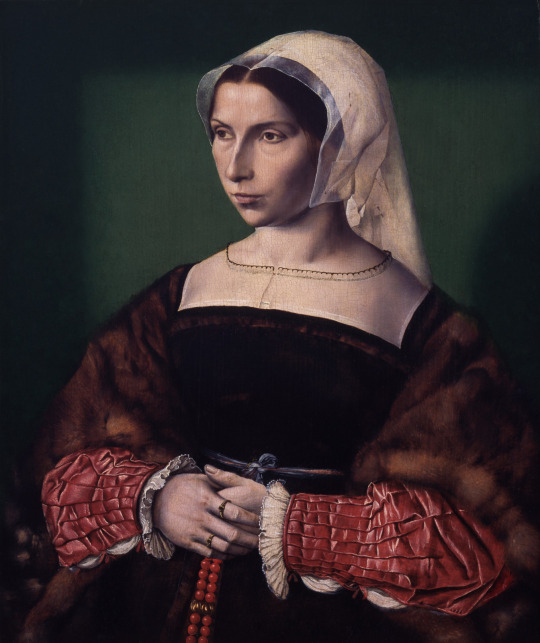

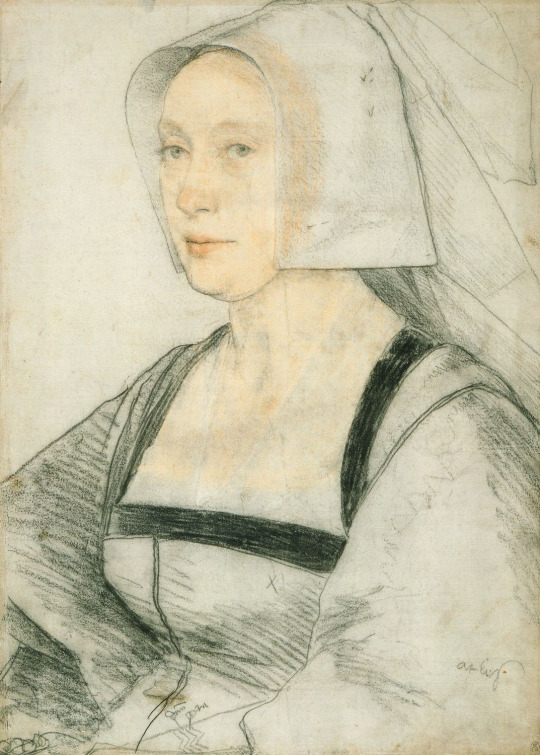


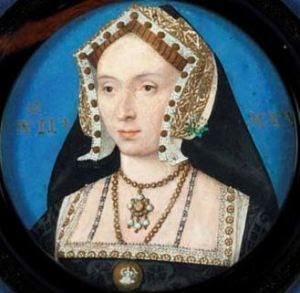

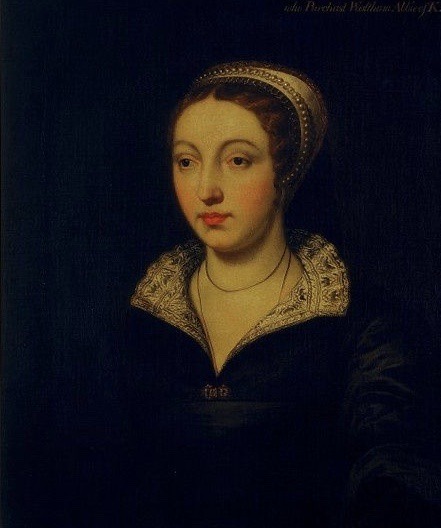
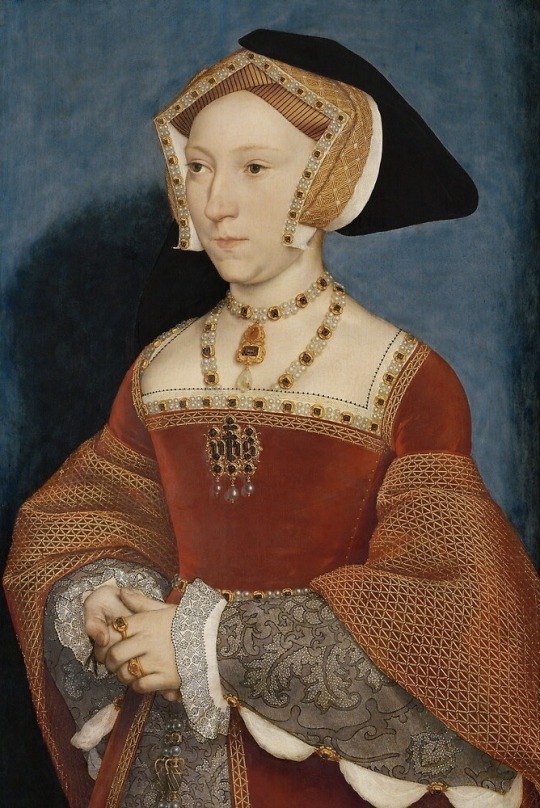
Ladies-in-waiting:
Anne Hastings - Daughter of William Hastings and Katherine Neville. Married at 10 years old to 13 year old George Talbot, becoming Countess of Shrewsberry. The two had 11 children.
Mary Say - Daughter of Sir William Say and Elizabeth Fray. Married to Henry Bourchier.
Elizabeth Scrope - daughter of Sir Richard Scrope and Eleanor Washbourne. Married to William Beaumont.
Margaret Scrope - No info.
Elizabeth Stafford - Daughter of Edward Stafford and Eleanor Percy. Her father was executed for treason against Henry VIII. Married to Thomas Howard, making her the Duchess of Norfolk. The two had five children. In 1530, she was caught conveying letters to Catherine of Aragon, and was exiled from court the next year.
Agnes Tylney - Daughter of Hugh Tylney and Eleanor Tailboys. Married to Thomas Howard, making her the Duchess of Norfolk. The two had seven children. She was put in the tower when her step-granddaughter, Katherine Howard, was convicted for treason, but was eventually released.
Maud Green - Daughter of Sir Thomas Green and Jane Fogge. Married to Sir Thomas Parr when she was 16 years old. The two had three children, including Katherine Parr.
Elizabeth Howard - Daughter of Thomas Howard and Elizabeth Tinley. Married to Thomas Boleyn. The two had three children, including Anne Boleyn.
Margaret Pole - Daughter of George Plantagenet and Isabel Neville. Her brother, Edward, was executed in 1499 for treason against Henry VII. Married to Sir Richard Pole, the two had five children. She was executed in 1541 for treason against Henry VIII.
Joan Vaux - Daughter of Sir William Vaux and Katherine Penyston. Married to Sir Richard Guilford, the two had one child. In 1499, she was made Lady Governess to Princess Margaret and Mary. She stood for Henry VIII as a witness that Catherine of Aragon and Arthur, Prince of Wales, had consummated their marriage.
Maids-of-honor:
Dorothy Badby - No info.
Elizabeth (Bessie) Blount - Daughter of Sir John Blount and Catherine Pershall. She was mistress to Henry VIII for about eight years, and bore him an illegitimate son, Henry Fitzroy. Married Gilbert Tailboys, then again to Edward Clinton. She gave birth to 7 children in her lifetime.
Gertrude Blount - Daughter of William Blount. Married to Henry Courtenay, the two had two children. She was chosen as godmother at the confirmation of Princess Elizabeth, even though she was a close friend of Catherine of Aragon. In 1538, she was put in the Tower along with her husband and son. Her husband was executed, but her and her son were released.
Anne Boleyn - Daughter of Thomas Boleyn and Elizabeth Howard. Married Henry VIII when his marriage to Catherine of Aragon was annulled. The two had one child, the future Elizabeth I. She was executed on false charges in 1536.
Joan Champernowne - Daughter of Sir Phillip Champernowne and Katherine Carew. Married to Sir Anthony Denny, the two had twelve children.
Elizabeth Darrell - Daughter of Sir Edward Darrell and Alice Flye. She was the mistress of Sir Thomas Wyatt, who she bore three children by. Married to Robert Stroud in her later years.
Bridget Fogge - Daughter of Sir John Fogge and Alice Fogge. Married to Antoneye Lowe, the two had four children.
Margery Horsman - Close friend of Anne Boleyn’s, and was one of those interrogated before Anne’s arrest.
Frideswide Knight - No info.
Mary Norris - Daughter of Thomas Fiennes and Anne Bourchier. Married to Sir Henry Norris, the two had four children. Five years after her death, her husband was executed for being one of the five alleged lovers of Anne Boleyn.
Katherine Payne - No info.
Jane Popyngcort - Taught Princess Margaret and Mary French. Was rumored to be a mistress of Henry VIII.
Maria de Salinas - Daughter of Martín de Salinas and Josefa González. Married to William Willoughby, the two had one child. She was a good friend of Catherine of Aragon’s, but wasn’t allowed to see her after the annulment from Henry VIII.
Jane Seymour - Daughter of Sir John Seymour and Margery Wentworth. Married Henry VIII after the execution of Anne Boleyn, and she bore him one child, a son. She died not long after she gave birth.
Anne Stanhope - Daughter of Sir Edward Stanhope and Elizabeth Bourchier. Married to Sir Edward Seymour, making her the Duchess of Somerset. The two had seven children. She was said to be very snobby, but was highly intelligent.
Lucy Talbot - No info.
Anne Weston - No info.
Mary Zouche - No info.
179 notes
·
View notes
Photo
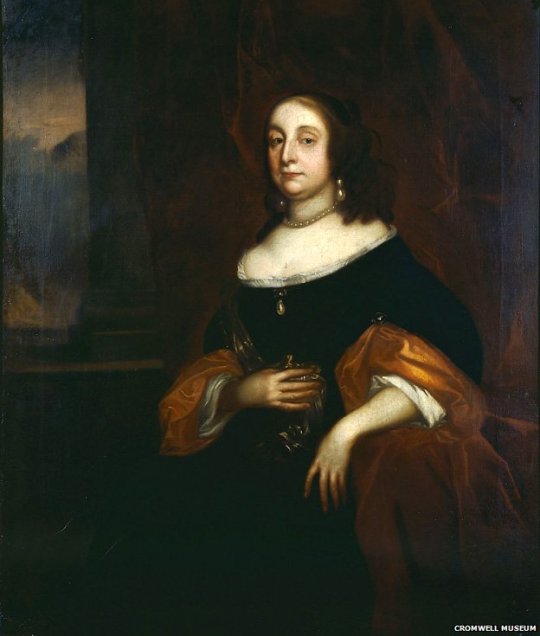
Robert Walker - Elizabeth Bourchier, Lady Protectress of England, Scotland and Ireland -
Robert Walker (1599–1658) was an English portrait painter, notable for his portraits of the "Lord Protector" Oliver Cromwell and other distinguished parliamentarians of the period. He was influenced by Van Dyck, and many of his paintings can now be found at the National Portrait Gallery, London.
Walker was the chief painter of the parliamentary party during the Commonwealth of England from 1649 to 1660. Nothing is known of his early life. His manner of painting, though strongly influenced by that of Van Dyck, is yet distinctive enough to rule out the possibility of him being one of Van Dyck's immediate pupils.
He is chiefly known for his portraits of Oliver Cromwell, and our knowledge of Cromwell's appearance is mainly based on Walker's paintings, as well as the portraits of him by Samuel Cooper and by Peter Lely. There are two main types. The earlier, representing Cromwell in armour with a page tying on his sash, and the later, full face to the waist in armour, were frequently repeated and copied.
The best example of the first type is perhaps the painting now in the National Portrait Gallery (formerly in the possession of the Rich family). This likeness was considered by diarist John Evelyn (1620–1706) to be the truest representation of Cromwell which he knew. There are repetitions of this portrait elsewhere. In another portrait by Walker, Cromwell wears a gold chain and decoration sent to him by Queen Christina of Sweden.
Walker painted Henry Ireton, John Lambert (examples of these two in the National Portrait Gallery), Charles Fleetwood, Richard Keble and other prominent members of the parliamentary government. John Evelyn himself sat for him, as stated in his Diary for 1 July 1648: "I sate for my picture, in which there is a death's head, to Mr. Walker, that excellent painter"; and there is another entry on 6 July 1650: "To Mr. Walker's, a good painter, who shew'd me an excellent copie of Titian". This copy of Titian, however, does not appear, as sometimes stated, to have been painted by Walker himself. One of Walker's best paintings is the portrait of an unknown man – formerly thought to be William Faithorne the elder – now in the National Portrait Gallery.
In 1652, on the death of the Earl of Arundel, Walker was allotted apartments in Arundel House, which had been seized by the parliament. He is stated to have died in 1658.
Walker painted his own portrait three times – one is at the National Portrait Gallery, which also houses two engravings of portraits of Walker by other artists (one was finely engraved in his lifetime by Peter Lombart). Another example, with variations, is in the Ashmolean Museum at Oxford.
6 notes
·
View notes
Photo
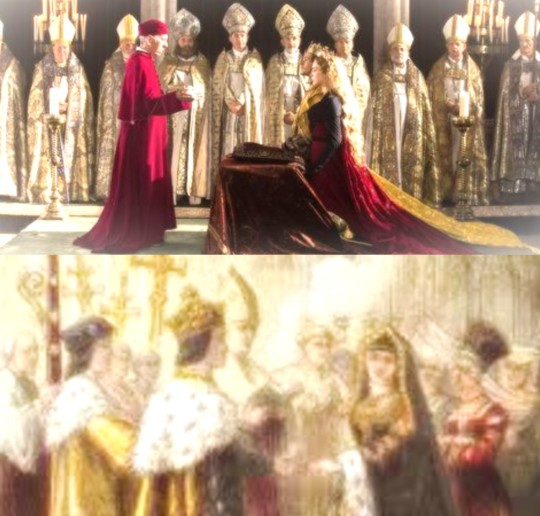
18 JANUARY 1486: The Union of Elizabeth of York and Henry VII of England.
There is a not a lot of information regarding the wedding ceremony. Henry VII had swore he would marry Elizabeth when he had been in exile in Brittany, at Vannes Cathedral, three years prior. A lot had happened since then though. The papal dispensation that their mothers had secretly plotted to get had to be reissued.
The papal dispensation covered the Earl of Richmond and the natural daughter of Elizabeth of York (meaning the Lady Elizabeth, not the legitimate daughter and heiress of Edward IV). It was vital that the couple married under the good eyes of the church. The fifteenth century had descended into chaos when two branches of the Plantagenet House had annihilated each other, their descendants had married off to other noble houses and as a result (after Bosworth), Henry claimed the crown.
But he was not blind. Connquering and ruling were two different things. He needed stability or at the very least, give the illusion of it to the people to put down civil unrest.
Therefore, he needed to marry Elizabeth who was the eldest living descendant of the first Yorkist King. The papal dispensation took time, and meanwhile Henry had to establish himself as the realm's ruler. He established his claim to the throne through his "right of conquest" and his mother, Margaret Beaufort whose family descended from John of Gaunt via his third marriage to his mistress, Katherine Swynford.
Nevertheless, his claim to the throne was still seen as weak, which was why parliament asked him on December 1485, two months after he had been crowned, to keep his promise to marry the Princess Elizabeth, and strengthen the claim of his descendants and *"restore some stability to the English royal line."
The pope had finally granted the dispensation at the beginning of the year, and it was confirmed in England by the papal legate, the Bishop of Imola on 16 January, two days later the coupe were married.The wedding ceremony was officiated by the archbishop of Canterbury, Thomas Bourchier. Given the statement that Henry wanted to make, as it was mentioned earlier, about their union; the Abbey would have been filled with Tudor imagery that Henry had created that gave a new interpretation of the dynastic conflict that is now known as the wars of the roses. By intertwining the white rose of York (Edward IV's favorite symbol besides the sun in splendor) with the red rose, Henry VII's union with Elizabeth meant to give a powerful message of peace. Illusory as it was, its impression lasted and their descendants continued to use this device and celebrate the union of their ancestors, Henry and Elizabeth. The building would have been decorated by royal colors such as "purple and gold, silk, ermine and delicate cloths of tissue." And the bride, adds Licence, "would have been splendidly dressed and adorned with jewels, lace, brocade and ribbons."
She would not have worn white, given that white was not a color worn for wedding dresses.(The first royal bride who did was in fact her daughter-in-law, Katherine of Aragon, when she married Prince Arthur). Elizabeth would have likely worn purple as it symbolized royalty, or taken one of her many new gowns.
After the archbishop placed the golden ring on Elizabeth, the couple said their vows. Following royal custom, Elizabeth promised to take Henry as her husband "for fairer, for fouler, for better, for worse, for richer, for poorer, in sickness and in health, to be blithe and amiable, and obliging in bed and at board" till death do them part.Besides the expenses, that no doubt would have been great, Elizabeth would have seen the new rose, the Tudor rose in every corner as well as her husband's other badges. By intertwining the white rose of York (Edward IV's favorite symbol besides the sun in splendor) with the red rose, Henry VII's union with Elizabeth meant to give a powerful message of peace. Illusory as it was, its impression lasted and their descendants continued to use this device and celebrate the union of their ancestors, Henry and Elizabeth.In recent fiction the two have been portrayed as an unhappy couple, pushed into the marriage by their shrewish mothers, but this is an interpretation based on secondary sources that have come many years (more than a century in fact) after the even took place. Francis Bacon writes very colorfully of Henry, and negatively of his mother but Francis was writing a century after the events took place and the two George Bucks themselves wrote even later. It is very easy to believe these sources, but if we want to look at the couple, we just have to look at their actions, at what they faced and what moral attitudes people had in this period.
A young woman such as Elizabeth would not have missed the opportunity to regain her status as Princess, and much less to be Queen. After being bastardized, and forced into hiding at Westminster, then in the midst of intrigue in the Ricardian court (with rumors -whether they are true or not, we will never know- that her uncle wanted to marry her shortly after his wife's passing and he later recanted after people protested at such an idea that he began to look elsewhere for a bride, and a spouse for Elizabeth); she would have no doubt welcome this new change in status. Elizabeth was a Princess-born, she had at one point been betrothed to the heir to the French Crown. She could not accept no better offer than to be a Queen, as it would also bolster her family's position as well and it did. Henry VII rewarded the Woodvilles. Richard Woodville as the third Earl of Rivers lived comfortably, Elizabeth Woodville kept some of her dower properties and when she was present, she always took precedence. Even Margaret Beaufort had to walk behind her as the older woman was Queen Dowager whereas Margaret was just a Countess -a Countess in her own right but a Countess nonetheless. Sir Edward Woodville, Elizabeth of York's uncle who took after his late eldest brother, was a highly pious and adventurous individual who proved his loyalty many times and was favored. The Catholic Kings themselves spoke very finely of him after his death. The set of ordinances that Edward IV had made for princes and that Anthony Woodville had supervise for Elizabeth's brother, Prince Edward, was kept and used for Arthur's upbringing. And Elizabeth herself was not left behind.
**"Like her parents, Elizabeth of York was a patron of William Caxton and his successor at the Westminster printing press, Wynkyn de Worde."
Furthermore, as Queen, she ruled over her own court and her own properties -some of which had previously belonged to her aunt Isabel, the Duchess of Clarence.As for Henry, this was also a personal triumph. Born to Margaret when she was thirteen (a birth that scarred her immensely. She would have no more children). Given as a ward to William Herbert who was given his uncle Jasper's earldom of Pembroke, and raised to be the perfect Yorkist to neutralize the threat he might pose in the future, he was then sent into exile after the Lancastrian Readetion failed and every member of the royal house was eliminated. Henry lived in a period of uncertainty, danger, and now it was all over. He was King. And he could also boast of having one important advantage. Many royal couples did not have the luxury of getting to know one another. They were married to this person or that, and whether or not they liked each other, they were expected to fulfill their duties. Henry fortunately did no have this problem. In the five month period that they waited for the dispensation to come, the two got to know each other. So when they walked down the aisle, they were not complete strangers.After the ceremonies ended, came the consummation. Elizabeth proved herself an exemplary Queen, living by the virtues of the day and this, as well as her fertility, made her well-remembered and loved. She would not be crowned until the following year, after “she proved herself” by giving Henry a male heir that autumn, less than nine months after their marriage. Given the speed in which they conceived, it is possible that the marriage could have been consummated before (since being betrothed was as good as being married. And the pope had given his approval, they knew it was only a matter of time before the bull came). But there is also the possibility that Arthur could have been premature.
Henry and Elizabeth’s marriage would remain strong, with the two relying on one another for mutual support when tragedy struck.
*From Dan Jones' Hollow Crown: The Wars of the Roses and the Rise of the Tudors.
**Elizabeth of York: A Tudor Queen and her World by Alison Weir.
I also recommend the following biographies: Elizabeth of York by Amy Licence and Blood Sisters by Sarah Gristwood.
7 notes
·
View notes
Photo

🏴🌹#onthisday in 1471, the Battle of Barnet took place. It was a victorious battle for the Yorkists under command of Edward IV. The event saw the deaths of Richard Neville, Earl of Warwick, his brother John Neville Marquise of Montague, Humphrey Bourchier Lord Cromwell and William Fiennes 2nd Lord Saye. [Source: The War of the Roses Catalogue / Facebook] https://www.instagram.com/p/B-9r9J_JJEF/?igshid=1ikh8bv0cpffn
9 notes
·
View notes
Text
Mary Tudor during the reign of Anne Boleyn - Part One 1533 - 1534
I wanted to do an accurate and detailed timeline as possible of everything that happened to Mary during the years Anne Boleyn was queen. Most know the basics, that she was mentally abused, harassed and depressed, but I wanted to show just how strong she was.
She endured the loss of her royal title and the death of her mother, but refused to passively accept the situation she was in. Despite being away from court she remained at the forefront of many people’s minds, and was considered a true threat to King Henry for her actions, some which verged on treason.
Some events are undated, so for some that have a general date I’ve put whereabouts it occurred. Others I have no idea, and have put them in a order that most makes sense. I’ve used many quotes from sources, and included some letters.
This got so long I had to split it into two parts, but here’s part one, 1533 - 1534, under the cut. I hope you find it interesting!
1533
22nd April – Henry writes to Princess Mary, telling her of his new marriage. She is at first sad, before pretending to be happy at the news. She writes a letter to the King, and when pressed for a verbal answer she “would not say a single word, referring instead to her letter.” Upon reading it, the King is well satisfied and praises her prudence.
She is forbidden to write to her mother. She begs to send a messenger who might testify that she sends no message except asking how the queen is, or show the King the letters first. He refuses.
? - Is unwell, and asks for permission for the Queen’s physician and apothecary to attend to her which the King grants. The Queen is allowed to send her messages.
27th May – Mary goes from Otford, where she has been staying nearly a year, to Beaulieu. While here in late June, she finds out her aunt Mary has died.
17th July – John Hussey is commanded to deliver Mary’s jewels to Frances Aylmer.
21st July – John Hussey tells Thomas Cromwell he spoke to Margaret Pole, who will make an inventory of the jewels. She will not deliver them unless obtain direct orders from King.
22nd August – Cromwell writes to Hussey desiring Mary’s plate.
28th August – Hussey writes to Cromwell. He has examined the clerk of Mary’s jewel house, and spoken to Margaret Pole. She says the plate is occupied at all seasons and cannot be spared.
7th September - Birth of Elizabeth.
? - Mary writes “a comforting letter to the Queen her mother, which is wonderfully good.”
? - Katherine replies back to Mary? [undated; c.late 1533 - beginning of 1534?]:
Daughter, I heard such tidings today that I do perceive, if it be true, the time is come that Almighty God will prove you; and I am very glad of it, for I trust He doth handle you with a good love. I beseech you agree to His pleasure with a merry heart; and be you sure that, without fail, he will not suffer you to perish if you beware to offend Him." I pray you, good daughter, to offer yourself to Him. If any pangs come to you, shrive yourself; first make you clean; take heed of His commandments, and keep them as near as He will give you grace to do, for then are you sure armed. And if this lady do come to you, as it is spoken, if she do bring you a letter from the King, I am sure in the self-same letter you shall be commanded what you shall do. Answer you with few words, obeying the King your father in everything, save only that you will not offend God and lose your own soul; and go no further with learning and disputation in the matter. And wheresoever and in whatsoever company you shall come, [obey] the King's commandments. Speak you few words, and meddle nothing. I will send you two books in Latin : one shall be De Vita Christi, with the declaration of the Gospels ; and the other the Epistles of Jerome, that he did write always to St. Paula and Eustochium; and in them I trust you shall see good things. And sometimes, for your recreation, use your virginals, or lute, if you have any. But one thing specially I desire you, for the love that you do owe unto God and unto me, to keep your heart with a chaste mind, and your body from all ill and wanton company, [not] thinking nor desiring any husband, for Christ's Passion; neither determine yourself to any manner of living until this troublesome time be past; for I dare make you sure that you shall see a very good end, and better than you can desire. I would God, good daughter, that you did know with how good a heart I do write this letter unto you. I never did one with a better, for I perceive very well that God loveth you. I beseech Him of His goodness to continue it; and if it fortune that you shall have nobody to be with you of your acquaintance, I think it best you keep your keys yourself, for howsoever it is, so shall be done as shall please them. And now you shall begin, and by likelihood I shall follow. I set not a rush by it ; for when they have done the uttermost they can, then I am sure of the amendment. I pray you recommend me unto my good lady of Salisbury, and pray her to have a good heart, for we never come to the kingdom of Heaven but by troubles. Daughter, wheresoever you become, take no pain to send for me, for if I may I will send to you.
By your loving mother, Katharine The Queen
20th September – Hussey tells Mary she is no longer a princess and is instead a bastard. She is astonished, and won’t accept unless he has direct writing from King. Her servants likewise agree a commandment given by John Hussey is not sufficient.
2nd October – Mary receives a letter stating the same from William Paulet, controller of the royal household. Disbelieving, she writes to the King:
“This morning my chamberlain came and informed me that he had received a letier from Sir Will. Paulet, controller of your House, to the effect that I should remove at once to Hertford castle. I desired to see the letter; in which was written "the lady Mary, the King's daughter," leaving out the name of Princess. Marvelled at this, thinking your Grace was not privy to it, not doubting but you take me for your lawful daughter, barn in true matrimony. If I agreed to the contrary I should offend God ; in all other things you shall find me an obedient daughter. From your manor of Beaulieu, 2 Oct.”
c. 9th October – The Earl of Essex [Henry Bourchier], the Earl of Oxford [John de Vere], Earl of Sussex [Robert Radcliffe] and Doctor Sampson go to Mary to tell her she is not to use the title of Princess. Mary makes them meet in front of her servants in case they put words in her mouth. She refuses to accept she is no longer a princess, bringing them nearly to tears. Mary writes to her father saying she would be obedient, but he cannot take away the titles God gave her. Her household is curtailed, with some such as her cofferer William Cholmeley, her cofferer entering Elizabeth’s household.
c.13th October – Mary moves from Beaulieu to Hertford castle.
c. late October/early November? – Mary hears she will be lady’s maid to Elizabeth. Asks the Spanish ambassador and lawyer, Eustace Chapuys for advice. Chapuys sends Mary a protest stating she would not do anything which was prejudicial to her.
13th December – Duke of Norfolk [Thomas Howard, Anne Boleyn’s uncle] goes to Mary, telling her father’s pleasure is for her to enter service of Elizabeth who he calls Princess of Wales. Mary says that “is a title which belongs to I by right, and no other.” She says her father’s proposals are strange and unfitting. Norfolk said he is not there to debate. Mary is allowed half an hour in her private chamber, which she uses to draw out a protest Chapuys gave her, saying if she is compelled to or persuaded by deceit to renounce her rights, enter a nunnery or marry against her will, no prejudice should occur. Margaret Pole, Countess of Salisbury offers to go with her, paying for her own expenses, but is refused. Mary asks for a years wages given to her servants and leaves for Hatfield with 2 attendants/maids of honour.
On the way, Doctor Foxe, her father’s almoner, tells her to stand firm for the love of God, otherwise the whole kingdom is in ruin and perdition.
Arriving at Hatfield, Norfolk asks her if she will pay her respect to the Princess. Mary says she “knows no Princess in England except herself.” Mary tells him to tell the king his daughter, the Princess of Wales, begs for his blessing. He refuses, so she tells him to go away and leave her alone. She retires to her chamber, the worst in the house, to cry.
c.26th December – Mary has now been deprived of her 2 maids of honour who accompanied her. She has only one common chamber maid, who doesn’t taste her food, however she supports her and sends letters to and from Chapuys and others. She has all her food in her chamber, and no good guard about her.
Anne Shelton, Anne Boleyn’s aunt, is in charge of the household. Lady Margaret Bryan, her old governess, mother of Elizabeth Carew is there, as well as William Cholmeley.
Mary refuses to pay court to Elizabeth unless compelled by sheer force. She can no longer be served meat before 11am like before. In her own house Mary “was much desirous to have meat immediately after she was ready in the morning, or else she should be in danger eftsoons to return to her said infirmity.” Unable to have this, now Mary wants her breakfast larger instead, so she can eat a little piece of meat at supper.
1534
c.5th? January – Henry visits Hatfield, sends orders ahead that Mary should not come to him. Cromwell, the treasurer [William Fitzwilliam] and captain of the guard [William Kingston] are sent to persuade Mary to renounce her title. She replies it is labour wasted to press her and has given a decided answer. She asks to see Henry and kiss his hand, but is refused. When Henry is leaving, she goes to a terrace at the top of the house, and bends on her knees with hands joined. Henry sees, bows to her and put his hand to his hat. The men with him do the same before leaving.
? January - Mary has been warned to be on her guard. She had been having breakfast in her chamber then going to table in public not eating or drinking; this is no longer allowed.
28th January - Chapuys sends to Mary “certain books of consolation, in which she takes great pleasure.”
He tells her there has been a a report in France about her marriage to the Marquis of Saluzzo, and that she must not consent to any marriage without her mother’s and Charles V’s consent.
29th January - The Duke of Norfolk and Brian Tuke visit Mary, presumably to persuade her to submit to the king.
? - Mary replies back to Chapuys, stating she will not marry without consent.
c.18?th February – Mary has no clothes and money, so sends a gentleman to the King. She also asks for her to attend mass at the church which adjoins the house but this is not allowed. Country people seeing her in the gallery salute her as princess and now she is kept closer. Nothing is done without the leave of Anne Shelton.
c.5th March – Anne Boleyn visits her daughter. She urgently solicits Mary to honour her as queen, saying it would be a means of reconciliation with the king, and she herself would intercede with him for her. Mary replies she “knew no Queen in England except her Mother, but if the said madam would do her that favour with her father she would be much obliged’.
16th March – Duke of Norfolk takes all her best clothes and jewels saying she is no longer princess and “her pride must be abated.” She continues to not pay court to Elizabeth unless forced – when walking together, she is always in front of or behind her when taken anywhere, instead of at her side. William Cholmeley is dismissed because he showed affection to her and did her some service.
23rd March - The First Act of Succession passed, declaring Mary a bastard and Elizabeth the heir.
25th March – A warrant is signed for new clothes for Mary.
26th March – Mary is forcibly put into a litter with Anne Shelton when she refuses to accompany Elizabeth to Eltham. She makes a public protest at the compulsion used.
c.? April – French ambassadors visit Elizabeth. Chapuys sends Mary a letter letting her know what has happened in Rome (Pope Clement has declared Henry and Catherine’s marriage valid), and that it is important she remain constant. Mary sends that she will do, and is better pleased with the said news then if they had sent her a million of gold.
18th April – Henry and Anne visit Eltham for 2 days with Richard Featherstone and more. Mary is commanded not to leave her chamber. One of Mary’s maids who refused to swear to the act of succession is locked up in her chamber and compelled to swear on threat of being taken to prison. Anne Shelton tells her if she were in the king’s place she would kick Mary out of the house for disobedience, and that the king said he would make her lose her head for violating the laws of his realm. Mary asks to see Richard Featherstone, her old tutor to confirm this. They speak in Latin so people don’t understand; Featherstone says “that is not good Latin”.
c.1st? May – The royal comptroller [William Paulet], and the Earl of Wiltshire [Thomas Boleyn] visit Mary to try and make her renounce title. She refuses.
c.10th? May – Mary’s maid who had been compelled to swear the act is dismissed, and has no where to go or a means to support herself. Mary is “much grieved for she was the only one in whom she had confidence, and by her means letters” from Chapuys and others. Her confessor is dismissed and replaced by another ‘Lutheran’. After her maid is dismissed, Henry sends a message begging if she would lay aside her obstinacy he would promise her before Michaelmas that she would have a royal title. She doesn’t believe him and refuses, as “God has not blinded her to confess her father and mother had lived in adultery and made her a bastard”.
7th June – Mary signs the letter of protestation Chapuys wrote and sent her before moving to Hatfield against her treatment. She declares she will not marry, enter a monastery or take any step without the consent of her mother. She diverts the guards around her to send it to Chapuys. Mary expects she will die. She believes “she could not better gain Paradise than by such a death.”
12th July – Chapuys warns Mary that William Paulet and Thomas Boleyn will visit her again tomorrow.
13th July – Paulet and Boleyn visit Mary for a second time. She is threatened to be shut up in her chamber.
27th July – King visits Eltham to see Elizabeth. He sends a gentlemen to make Mary withdraw to her chamber so she would not see him.
29th August – Hearing that the King intends the household to move to Hunsdon and for her to accompany Elizabeth, Mary sends to Chapuys 3 times in less then 24 hours to know what to do. He says he will go to Greenwich in disguise and see her pass, and to speak boldly but not go to extreme of being taken by force.
The comptroller promises she will not go after Elizabeth, however the litter is already there and Mary is compelled to go after. Instead, the comptroller allows her, as soon as she is mounted to go before or after the litter as she pleased. As soon as she on horseback she pushes forward, galloping ahead and arriving at Greenwich an hour before Elizabeth.
She enters the waiting royal barge and sits in the most honourable place. When they set sail, a disguised Chapuys watches on from the riverside.
? - Mary is diseased in her head and stomach, causing Anne Shelton to send for a Mr Michael who gave her pills. These cause her to be sick. One of Chapuys’s servants coming to see how she did is not allowed to see her. He warns her that mischief might arrive if anything happens to Mary.
2nd September – The royal physician William Butts visits Mary, who is at the beginning of her “old disease”. He sends for her mother’s physician and the apothecary.
? – The Queen’s physician and apothecary visit Mary. A messenger telling them to pay their respects to Elizabeth before Mary arrives late. They can only talk to Mary in the presence of other people, and only in English.
? - Mary sends a letter to Nicholas Carew.
? - Margaret Bryan gives her daughter, Elizabeth Carew’s, reply to Mary. Elizabeth desires Mary “for the passion of Christ in all things to follow the King otherwise she was utterly undone.’” The letter had been opened.
20th September – Anne Shelton asks Mary who she got to send her letter to Nicholas. She tells her it was her servant Randall Dodd; Margaret Bryan confirms she is telling the truth.
27th September – Henry has renewed his affections for a lady of the court who supports Mary.
c.10th October – Henry’s new mistress sends a letter to Mary telling her to be of good cheer, and that her troubles will soon come to an end, and when the opportunity occurs she will show herself a true and devoted servant.
c.20th October – Before Mary leaves the More for Richmond, she is visited by nearly all the gentlemen and ladies of court to Anne Boleyn’s annoyance. Chapuys tells her that as the King’s severity is abating she must take care not to give him any cause for offence and his protestation he made for her preserved her from any danger. She must make no difficulty about following Elizabeth this time but should say she is very glad in this to satisfy her father.
Mary goes to Richmond in a velvet litter, instead of the leather one used previously. At Richmond, to avoid having to follow Elizabeth’s litter, she chooses to go by water to see Chapuys watching by the riverside again.
In the evening she arranges with bargemen to row her along the bank. She sends a message to Chapuys to make sure he would not fail to be at his house nearby so she could see him.
c.21st October - She persuades the steersman to go down one side of the river. When she gets near Chapuys she orders the barge to be uncovered and goes on deck in the most conspicuous place so they could see each other.
c.22nd October – Anne Boleyn visits Richmond to see her daughter, with the Duke of Norfolk, Duke of Suffolk, and ladies. Mary refuses to leave her chamber until Anne Boleyn is gone so she won’t see her.
c.23rd? October – Mary informs Chapuys via letter that Anne is making those about her show her all the rudeness and annoyance they could.
c.17th November – Mary has a slight illness again. Anne Shelton continues to induce her to renounce her title of Princess. Duke of Norfolk has placed in the Tower one of Mary’s maids, accused of calling her princess. He wants to know who had informed Chapuys to wait by the riverside to see Mary pass.
c.19th December – The maid in the Tower has been released but forbidden to return to Mary.
Mary is ill, and the king sends his physician. They determine her illness is partly from ill treatment. The physician advises to send her to her mother, Henry refuses.
c. late December – Mary is told if she doesn’t renounce her title of princess she will go to the Tower or die. The people in her household desire her death, “by which they say the world will be at peace and they will be discharged of the pain and trouble she gives them.”
39 notes
·
View notes
Text
Historical Thought For the Day
Thomas Howard, 3rd Duke of Norfolk, was everyone's uncle.

Oh yes he was.
Everyone remembers Anne and Katherine, but what's often forgotten is that Norfolk's first wife was Anne of York, which makes him Henry's uncle too.
(See now I'm thinking about Viscount Lisle, and the story that his heart gave out at the shock of being told that his royal nephew had shown him mercy, and how Norfolk was scheduled to die on the same day Henry did.
He wasn't one for uncles was Henry.)
Anyway, this makes him uncle to all of Elizabeth of York's children and great-uncle to their children in turn.
(So James V, Margaret Douglas, Mary, Elizabeth and Edward, Frances and Eleanor Brandon.)
On his wife's side, he's uncle to Dorothy Stafford, all her brothers and sisters and their heirs, and that's a lot.
Then there's Katherine Howard and her siblings, plus Anne, George and Mary Boleyn.
Not only that, but since relatives were gained upon marriage, he's uncle to their spouses, namely Jane Parker, William Carey, William Stafford, and Henry again (and again).
Plus he's great-uncle to Catherine Carey, Francis Knollys, Henry Carey and Anne Morgan.
When Anne and Katherine married Henry, they inherited Norfolk too, so he's uncle to Anne, Katherine, and William Stafford twice, thrice to Henry, thrice a great-uncle to William and Dorothy's kids, and great-uncle four times to Elizabeth, six if you count the link through Katherine as her new mother.
Then you have the Bourchier connection and remaining Howards, and who do we find?
Anne Carew
Nicholas Carew
Nicholas Throckmorton
Francis Bryan
Thomas Radclyffe, 3rd Earl of Sussex
Henry Stanley, 4th Earl of Derby
Ferdinando Stanley, 5th Earl of Derby
Douglas Sheffield
Charles Howard, 2nd Baron Howard of Effingham
That's not an exhaustive list, as I've only named those off the top of my head, but I trust it proves my point.
Thomas Howard: Everyone's Uncle
Show some respect, he's probably your uncle too.
Bound to be.
I dare say if we delved into it we'd discover that he was his own uncle, such was his dedication.
God bless him.
10 notes
·
View notes
Text
I'm Looking For Descendants Of Maj-General Edward Archibald Harbord Anson (1826-1925)
I'm looking for descendants from Edward Archibald Harbord Anson (1826-1925) to share for some information.
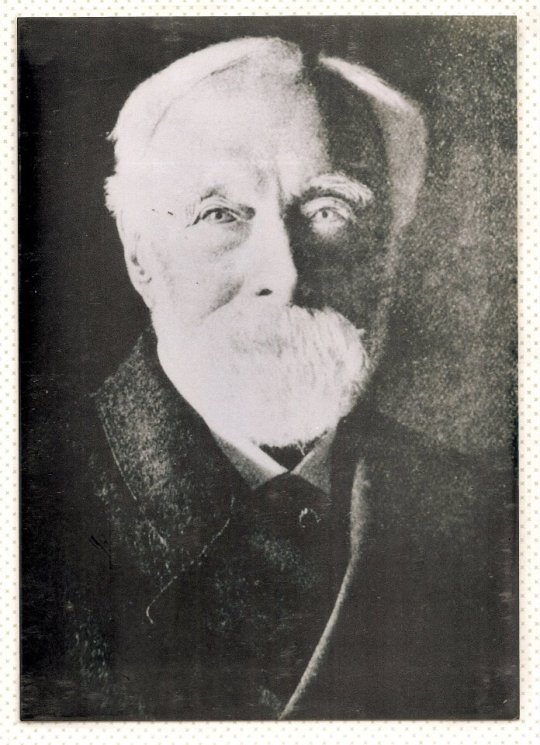
Edward Archibald Harbord Anson (1826-1925),son of Major-General Sir William Anson, 1st Baronet & Louisa Frances Mary Dickenson.He married 1stly,Elizabeth Mary Bourchier & 2ndly,Isabelle Jane Armistead.Served as Acting Lieutenant-Governor of Penang( 1867)/Lieutenant-Governor(8 June 1867-19th Feb.1871)/( 1873 - 1877)/( 1877)/( 1877- 1879)/( - 2nd Feb.1881)
His issue:-
i) Archibald John George Anson (1851–1929) married 1stly,Gwendoline Du Lane (Harford-Jones) & 2ndly,Isabel Denison.
ii) Elizabeth Mary Louisa Anson (1852–1934).
iii) John William Henry Anson (1856–1889) married Frances Anne Leigh (Hardings).
Please contact me at :- [email protected]
0 notes
Text
Contact us here if you wish to play one of them: https://thetudors.forumotion.com/t3169-england?fbclid=IwAR3xzSVOvdNGu7fobnSbm7yV0aXjrTm11nBlURG7WFggJGSFWmrvq6l3c2Q#50665

More Family:
Jhon More- son of Thomas More. Little is know about him, so his story is all yours to make.
Elizabeth More- Is daughter to Thomas More. Little is known about her, her story is all yours to make.
Margaret More- was an English writer and translator, probably the most learned woman of sixteenth century England. She was the daughter of Thomas More and Jane Colt, who probably died of childbirth. Margaret, "Meg" as her father used to call her, married William Roper. During More's imprisonment in the Tower of London, she was a frequent visitor to his cell.
William Roper- husband to Margaret More
Anne Cresacre-wife to Jhon More
Margaret Gigs- was one of the most learned women of the Tudor era and the foster daughter of Sir Thomas More.
John Clement- husband to Margaret Gigs
Gilcs Heron- husband to Cecily More
Parr Family:
Elizabeth Tyrwhitt- was a gentlewoman and courtier. she served in the households of Queen Jane Seymour and Queen Catherine Howard. She was a friend, lady-in-waiting and distant cousin, of Henry VIII's sixth wife, Catherine Parr, and served in her household.She served in the household of Katherine Parr and her fourth husband, Thomas Seymour, Baron Seymour of Sudeley. She gave evidence about a possibly inappropriate relationship between Seymour and his stepdaughter, the future Elizabeth I of England and about the death of Catherine Parr.
Grace Parr - daughter to Anne Bourchier and William Parr, niece to Anne and Katherine Parr. Fictional.
Darcy Family:
George Darcy, 1st Baron Darcy of Aston- son of Thomas Darcy, 1st Baron Darcy de Darcy
Sir Arthur Darcy- son of Thomas Darcy, 1st Baron Darcy de Darcy
Mabel Darcy - daughter of Thomas Darcy
Elizabeth Darcy- daughter of Thomas Darcy, 1st Baron Darcy de Darcy
0 notes
Photo

Make 10.62% on this bet: Bet 61.46 on Yuya Ito (William Hill Q: 1.8) and win 110.62 Bet 38.54 on Harry Bourchier (None Q: 2.87) and win 110.62 More chances: http://toomuchluggage.com #bettingmoney
0 notes